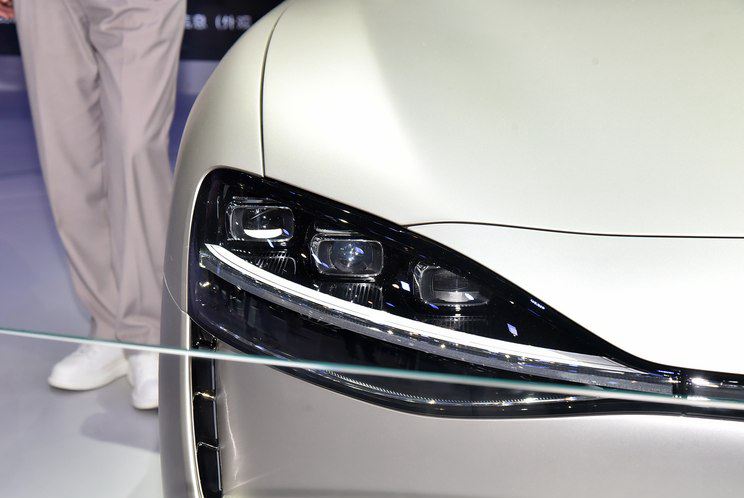Challenges For Premium Automakers In China: Case Studies Of BMW And Porsche

Table of Contents
Intense Competition from Domestic Brands
The rise of domestic Chinese automakers represents a significant threat to established premium brands. Companies like Nio, Xpeng, and Li Auto are rapidly gaining ground, leveraging advanced technology, sophisticated designs, and competitive pricing to attract Chinese consumers.
Rise of Local Competitors
The success of domestic brands is fueled by several factors:
- Increased consumer preference for domestic brands: National pride and a growing sense of brand loyalty are driving consumers towards locally produced vehicles. This shift in consumer sentiment presents a direct challenge to foreign premium brands.
- Aggressive pricing strategies: Chinese manufacturers often undercut established premium brands on price, making their vehicles more accessible to a wider range of consumers. This price competition forces premium brands to re-evaluate their pricing strategies.
- Development of sophisticated electric vehicle (EV) technology: Chinese brands are rapidly innovating in the EV space, challenging the technological expertise long associated with established premium automakers. This technological parity is eroding the perceived advantage of foreign brands.
The Importance of Localized Strategies
To compete effectively, premium brands must adapt their offerings to the unique preferences of Chinese consumers. Simple product transplantation won't suffice.
- Understanding cultural nuances: Marketing campaigns and product features must resonate with Chinese cultural values and consumer expectations. Ignoring these nuances can lead to significant marketing failures.
- Localized marketing campaigns: Tailored marketing strategies focusing on specific consumer segments are critical for success. Generic global campaigns rarely achieve the desired impact in the diverse Chinese market.
- Adapting vehicle features: Vehicle specifications, including interior design, technological features, and even engine options, need to be adapted to meet the specific needs and preferences of the Chinese market. For example, ride comfort tuned for Chinese road conditions is crucial.
Navigating China's Regulatory Landscape
China's automotive industry is subject to a complex and evolving regulatory landscape, posing significant hurdles for premium automakers.
Stringent Emission Regulations
China's commitment to environmental protection is driving the transition to electric vehicles (EVs). This means premium automakers must:
- Invest in EV infrastructure: Building charging networks and supporting services is critical for EV adoption in China.
- Comply with emission standards: Meeting increasingly stringent emission regulations requires significant investment in research and development.
- Balance ICE and EV production: Strategically managing the production of both internal combustion engine (ICE) and electric vehicles is crucial to remain competitive in a rapidly changing market.
Import Tariffs and Trade Policies
Import tariffs and complex trade policies add significant cost and complexity for premium automakers.
- Impact on vehicle pricing: Tariffs directly affect vehicle pricing and profitability, making it challenging to compete on price.
- Mitigation strategies: Premium brands must develop strategies to mitigate the impact of import duties and regulations, such as local production.
- Local production and sourcing: Establishing local production facilities and sourcing components locally can significantly reduce import costs and improve competitiveness.
Case Studies: BMW and Porsche in China
BMW's Strategies
BMW has invested heavily in localization, including establishing joint ventures and manufacturing facilities in China. They have also adapted their product offerings to meet local preferences, offering vehicles with features specifically designed for the Chinese market. Their success is partly attributed to their early entry into the market and consistent efforts in adapting to the local environment. However, increased competition from domestic EV manufacturers is a growing concern.
Porsche's Strategies
Porsche's strategy focuses on maintaining its position in the luxury segment. They have targeted high-net-worth individuals with tailored marketing campaigns and exclusive events. Their foray into EVs with the Taycan aims to cater to the growing demand for luxury electric vehicles in China. While their brand recognition remains strong, maintaining exclusivity alongside increased competition requires careful management of brand image and innovative product offerings.
Conclusion
The Chinese automotive market presents a unique set of challenges for premium automakers. Success requires a multifaceted approach that combines effective localization strategies, navigating complex regulations, and adapting to intense competition from domestic brands. By carefully studying the experiences of BMW and Porsche, and continually analyzing the dynamic market landscape, other premium automakers can better understand the nuances of operating successfully in the Chinese market. Understanding the challenges facing premium automakers in China is crucial for long-term success. Further research into specific market trends and consumer behaviors is essential for continued growth in this vital and ever-evolving automotive market for premium automakers in China.

Featured Posts
-
 Tulsas Growing Homeless Population A Frontline Report From The Tulsa Day Center
May 02, 2025
Tulsas Growing Homeless Population A Frontline Report From The Tulsa Day Center
May 02, 2025 -
 Sony Play Station Christmas Voucher Glitch Users Receive Free Credit Compensation
May 02, 2025
Sony Play Station Christmas Voucher Glitch Users Receive Free Credit Compensation
May 02, 2025 -
 Play Station Beta Program Sony Opens Registration Requirements And How To Apply
May 02, 2025
Play Station Beta Program Sony Opens Registration Requirements And How To Apply
May 02, 2025 -
 The Urgent Need For More Psychiatrists In Ghana A National Mental Health Crisis
May 02, 2025
The Urgent Need For More Psychiatrists In Ghana A National Mental Health Crisis
May 02, 2025 -
 Whats App Leaks Ignite Internal Conflict In Reform Party Zero Integrity Accusations Fly
May 02, 2025
Whats App Leaks Ignite Internal Conflict In Reform Party Zero Integrity Accusations Fly
May 02, 2025
